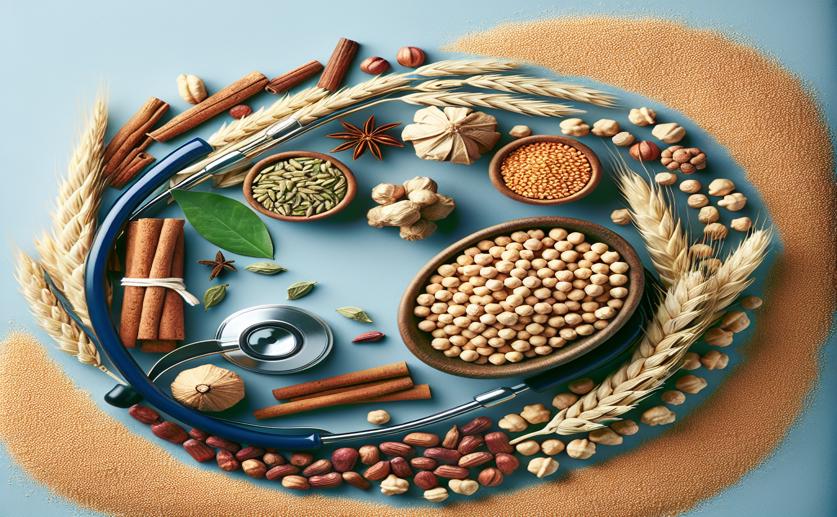
Barley, Cardamom, and Chickpea Mix Helps Fight Diabetes
Jenn Hoskins
1st March, 2024

Image Source: Natural Science News, 2024
Key Findings
- A study from the University of Karachi found a herbal mix reduces blood sugar and weight in diabetic, obese rats
- The herbal granules also improved liver, kidney, and pancreas health, and increased antioxidant activity
- These findings suggest the herbal mix could be a potential treatment for diabetes and obesity
References
Main Study
1) Combination therapy with Hordeum vulgare, Elettaria cardamomum, and Cicer arietinum exhibited anti-diabetic potential through modulation of oxidative stress and proinflammatory cytokines.
Published 29th February, 2024
https://doi.org/10.1016/j.heliyon.2024.e26126
Related Studies
2) Chemical characterization, antioxidant and antidiabetic activities of a novel polyherbal formulation comprising of Hordeum vulgare, Elettaria cardamomum and Cicer arietinum extracts.
3) Obesity and insulin resistance: Pathophysiology and treatment.
4) Anti-Diabetic Effects of Allium hookeri Extracts Prepared by Different Methods in Type 2 C57BL/J-db/db Mice.
5) Stink bean (Parkia speciosa) empty pod: a potent natural antidiabetic agent for the prevention of pancreatic and hepatorenal dysfunction in high fat diet/streptozotocin-induced type 2 diabetes in rats.



 25th January, 2024 | David Palenski
25th January, 2024 | David Palenski